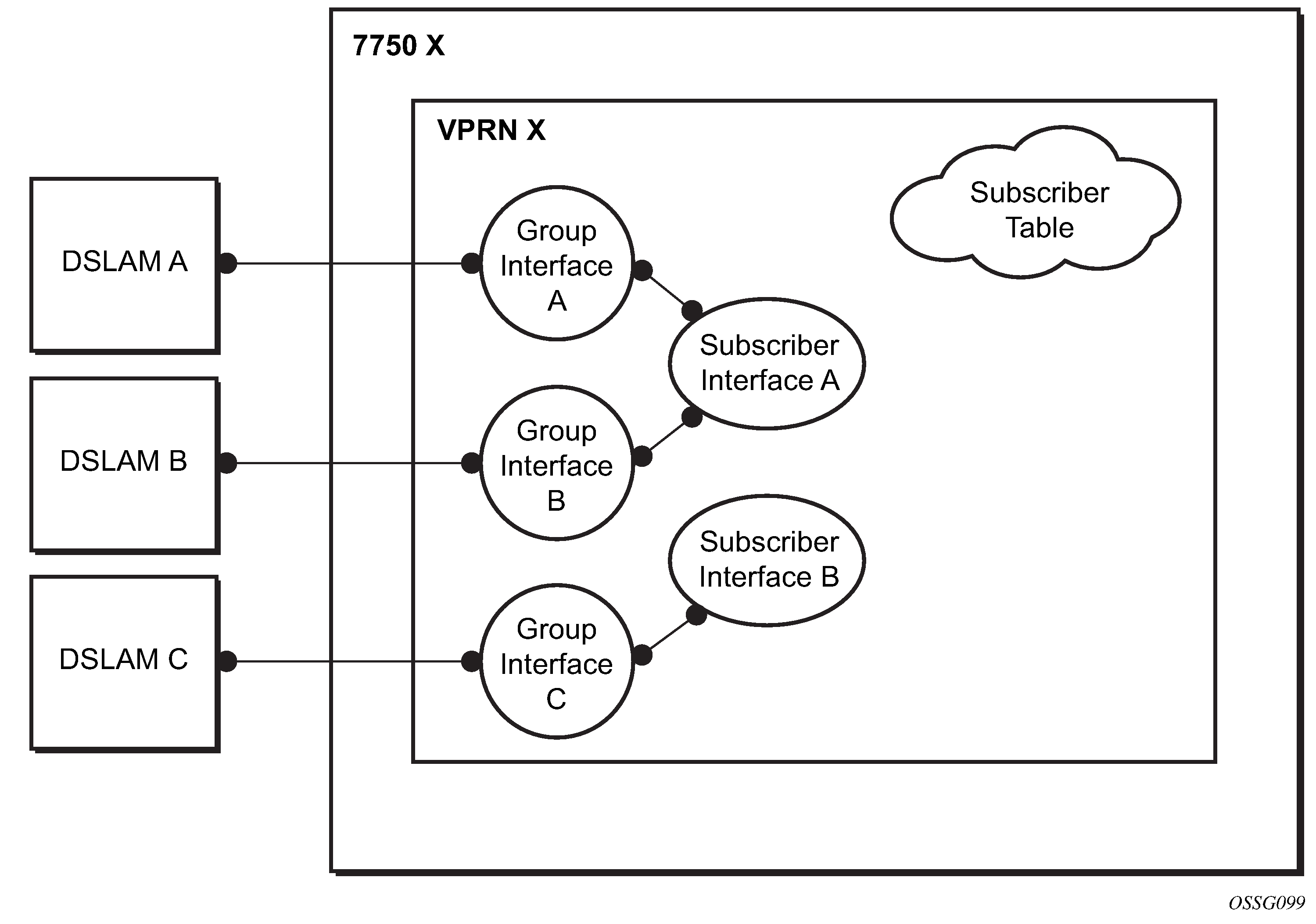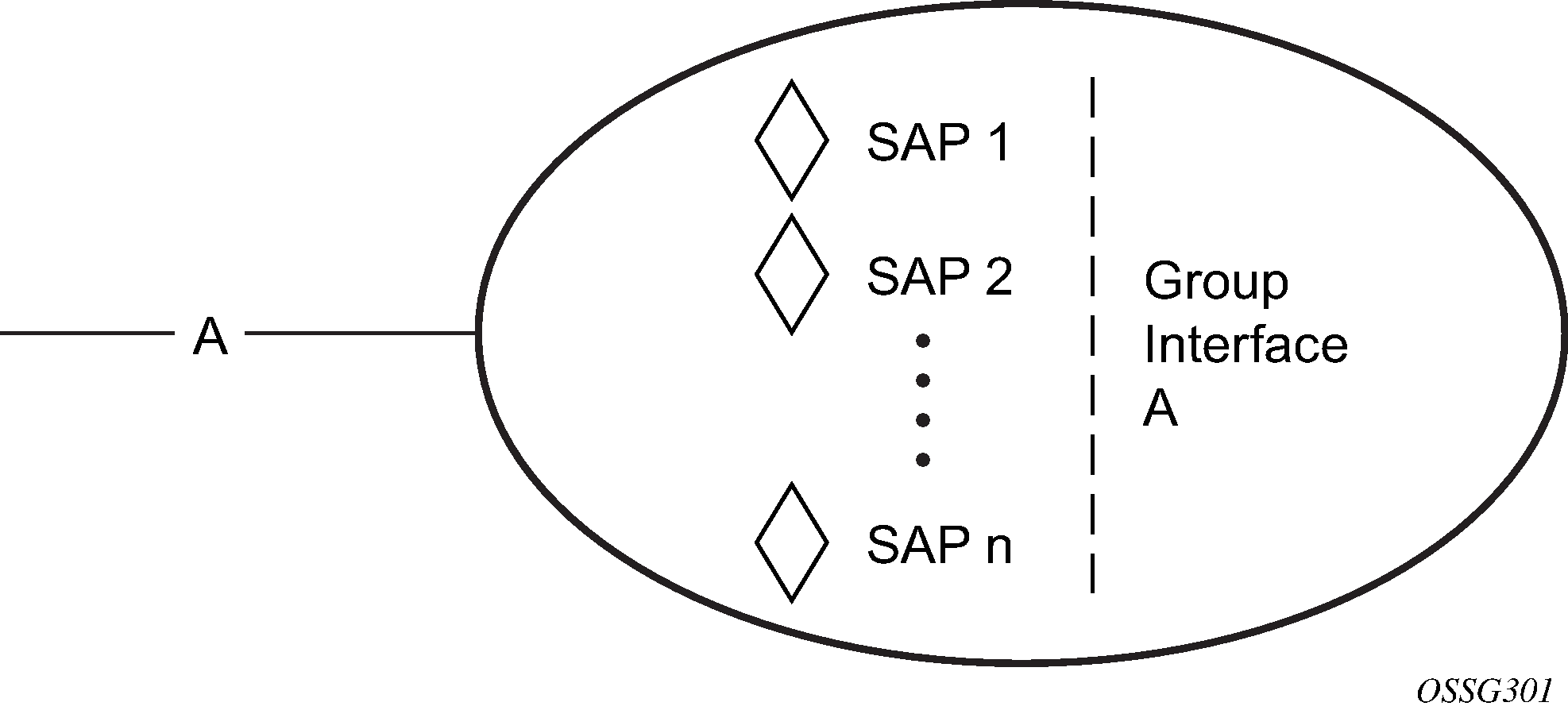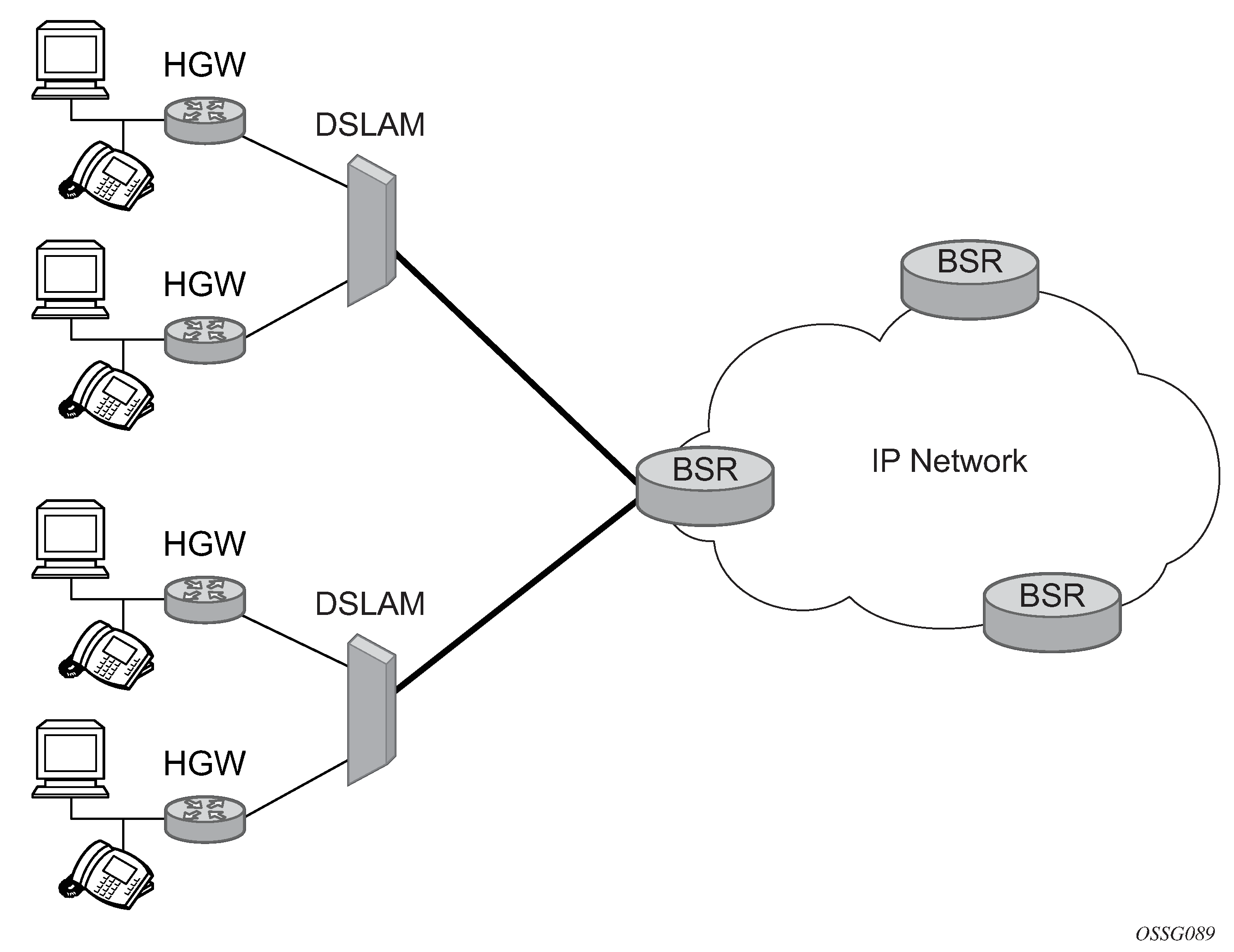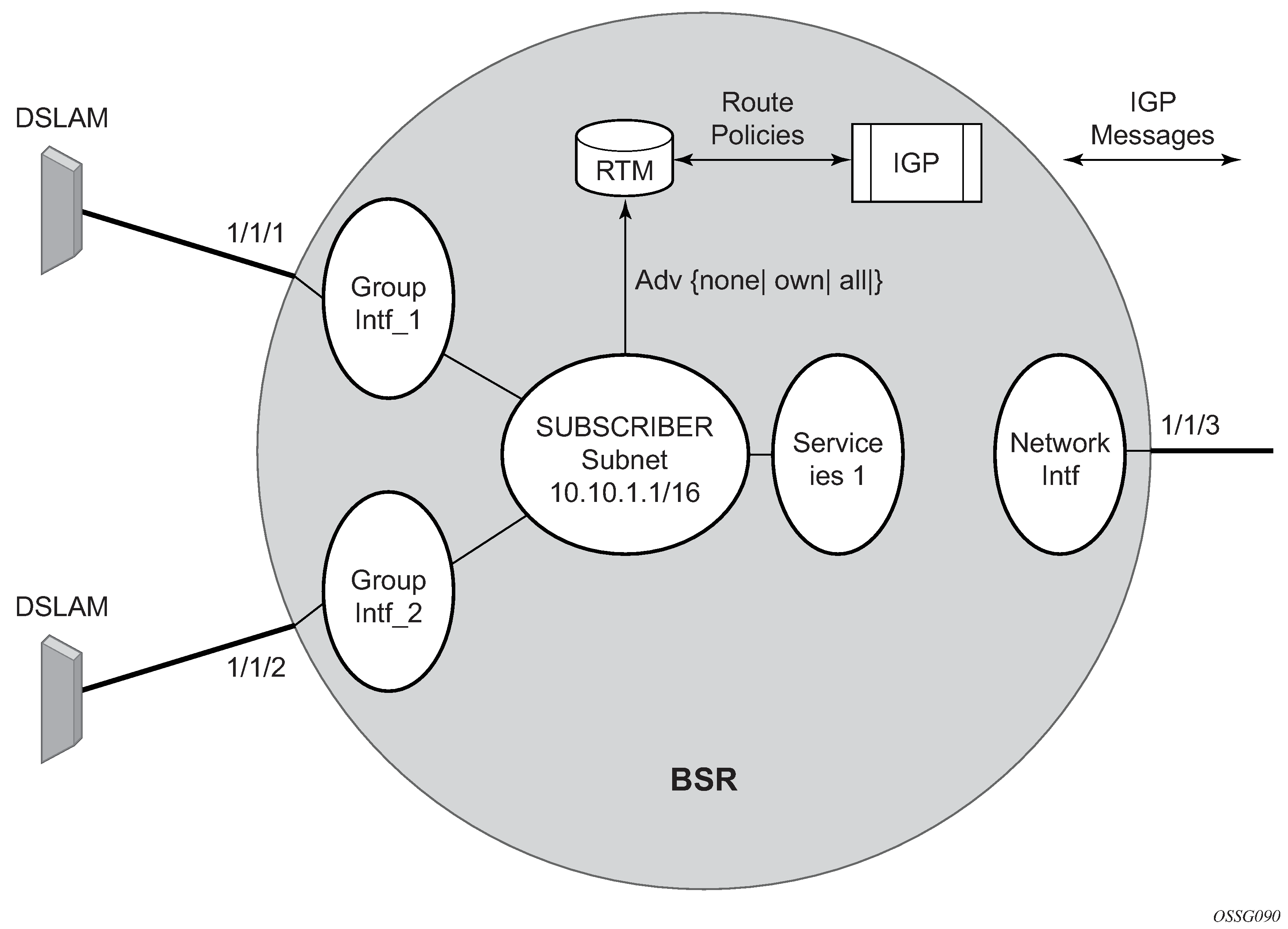On regular interfaces in an IES or VPRN service, only one SAP can be associated. A group interface allows multiple SAPs to be configured as part of a single interface. All SAPs in a single group interface must be within the same port. Because broadcast is not allowed in this mode, forwarding to the subscriber is based on IP/MAC addresses information gathered by the subscriber management module and stored in the subscriber management table. These entries are based on both static and dynamic DHCP hosts. Routed Central Office (CO) must be used with standard subscriber management or enhanced subscriber management. DSLAMs are typically deployed with Ethernet interfaces.
This model is a combination of two key technologies, subscriber interfaces and group interfaces. While the subscriber interface define the subscriber subnets, the group interfaces are responsible for aggregating the SAPs.
As depicted in Figure: Subscriber interface in an IES/VPRN service, an operator can create a new subscriber interface in the IES or VPRN service. A subscriber interface allows for the creation of multiple group interfaces. The IP space is defined by the subnets of the subscriber interface’s addresses. Figure: Details of a group interface shows the details of group interface A.


Figure: Aggregation network with direct DSLAM-BSR connection shows a network diagram where the DSLAM are connected directly to a Broadband Service Router (BSR) providing access to an IP subnet. Subscribers from multiple DSLAMs can be part of the same subnet. Note that BSR is also referred to as Broadband Network Gateway (BNG).

The BSR can be configured with multiple subnets, allowing subscribers to be part of a single subnet as well as providing mechanisms for re-addressing or expanding existing services without affecting existing users.

Figure: Detailed view of configurable objects related to Layer 3 subscriber interfaces shows a detailed view of a router and the configuration objects implemented to support Layer 3 subscriber interfaces.
A subscriber service is defined by an IES Service. One or more IES services can be created.
Each IES service concentrates a number of subscriber-interfaces. The operator can create multiple subscriber interfaces (represented as a subscriber subnet). A subscriber interface defines at least one subnet.
A group interface is provisioned within the subscriber interface for each DSLAM connected. All group interfaces created under the subscriber interface share the same subnet (or subnets). Group interfaces (shown as intf_1 and intf_2 in Figure: Detailed view of configurable objects related to Layer 3 subscriber interfaces) are configured as unnumbered and are associated with the subscriber-interface under which they are configured.
SAPs can be configured under the group interface. In a VLAN-per-DSLAM model only, one SAP per group interface is needed, while in the VLAN-per-subscriber model, a subscriber of the DSLAM requires its own SAP. All SAPs on a group interface must be on the same physical port or LAG.
The individual features related to subscribers, such as DHCP relay, DHCP snooping and anti-spoofing filters, are enabled at group interface level. For a Routed CO model of subscriber management, and when enhanced subscriber management (if sub-sla-mgmt is configured). Then, hashing is based on an internally assigned subscriber-ID. Having a unique subscriber ID configured in CLI ensures that each subscriber is assigned a unique internal subscriber ID.
It is assumed that individual end-user devices (further referred to as subscriber hosts) get their IP address assigned through either DHCP or static configuration. The management of individual subscriber hosts (such as creation, queue allocation, and so on) is performed by ESM.
The operator can provision how the system advertises routes. While most deployments advertise the full subnet it is possible to have the system advertise only the active, discovered or static host routes.
The distribution of this information into routing protocols is driven by import/export route policies configured by the operator.